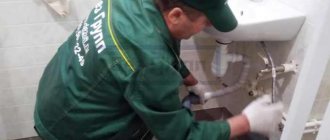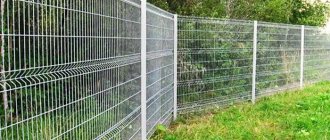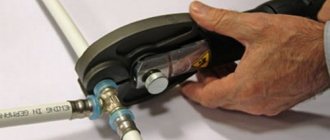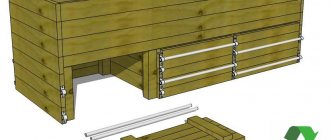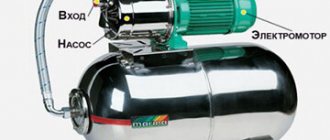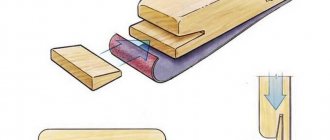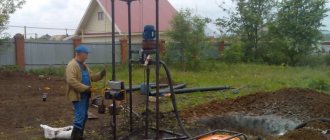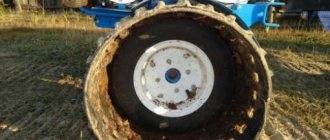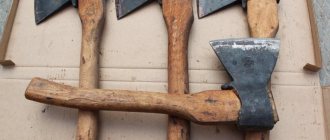Methods for polishing aluminum: chemical method
This technology is environmentally friendly, simple and quite fast. It can be realized by having acid-resistant steel, which will form the basis of the polishing bath. If the volume of work is relatively small, you can use porcelain crucibles. A solution of acids is poured into the container:
- sulfuric;
- nitrogen;
- orthophosphoric.
The products are dipped into a hot solution, the temperature of which should vary from 90 to 120 ° C, the final value will depend on the type of aluminum. It is necessary to expose aluminum to the composition for 30 seconds or a minute, and repeat the action about 6 times. In between, the parts are washed, and they need to be shaken constantly.
Chemical polishing of aluminum will be of better quality if you use a drum rotating at a certain speed. After completing such manipulations, a film of contact copper will remain on the surface. It should be removed by washing the product under running water at low temperature. This must be done in a catcher. At the next stage, the products are treated with 30 percent nitric acid.
Examples of modding with polished aluminum
For our modding guide, I've prepared a few photos showing examples of some of my modding work that involves polishing aluminum. These photos show the body of a digital projector that I made myself as part of my modding project.
The custom projector housing is made of aluminum, including its frame
Modding video projector housing with polished aluminum panels
Worn aluminum close-up
Approximate view of the entire body
Additional recommendations for work
Polishing of aluminum can be carried out using alkali solutions:
- trisodium phosphate;
- sodium nitrate;
- caustic soda;
- sodium nitrate.
Their temperature should be higher compared to the acid method, the limit is 120-140 °C. The products need to be held for approximately 5-20 seconds. When this technique is used, the aluminum loss will be approximately 8 µm of the total layer thickness.
Use of electropolishing
Polishing aluminum can be done in another way. In this case, it is possible to obtain a sparkling and smooth surface, and cleaning is characterized by high quality. Electrolytes for such work in most cases contain sulfuric and phosphoric acid; the remaining components will depend on the material.
Electrolytes allow you to achieve shine after completion of work. For the process, the temperature must be lower than in the case described above; the temperature limit will be from 60 to 90 °C.
Polishing must be carried out for 5 minutes, while the current density can be 10-50 A/dm². The polishing process involves the use of lead cathodes, but there are other alloys that require the use of stainless steel. Polishing requires the use of duralumin pendants, as well as electrolyte baths with polyethylene, lead or fluoroplastic treatment. You need to prepare alkaline electrolytes, they will cost less.
The process parameters will be influenced by the composition of the electrolyte, the temperature limit can vary from 40 to 95 °C, as for the exposure, it lasts from 3 to 6 minutes, while the current density at the anode is a limit of 3-20 A/dm². When choosing cathodes, you should prefer nickel-plated ones.
Features of decorative etching
Polishing of aluminum can be done in a decorative way. This technique acts as a subtype of electropolishing. Aluminum alloys are etched by anodes according to the regime in a phosphorus-chromium electrolyte. A crystalline pattern is formed on the surface of the products, which looks like rosettes or frost. All parts are hung on the anode rod, and then processing can begin. Manipulations should be carried out at a voltage of 25-30 V. By the end, the voltage will rise to 35-40 V, the anode current density will be equal to the limit of 8-12 A/dm², while the temperature will vary from 50 to 80 °C.
After about 20 minutes the drawing will appear. If the voltage begins to rise arbitrarily, then the process can be considered complete. After completing the manipulations, the products are washed, dried well, and anodic oxidation is carried out on them. The aluminum is then painted with organic paint.
The mirror-like shine of aluminum can be obtained by another method of anodic etching, which is called sparking. For this purpose, before and after the process, the products are subjected to heat treatment according to a special scheme. You can use anodic etching “snowball”, which allows you to create a matte-sparkling surface.
I noticed that there is no article on polishing aluminum on the bikepost. I decided to share my experience in polishing crankcase covers. Who is interested in all the attention under cat. It all started a year ago. The decision to polish the lids was the only one and irrevocable. But I approached this without any knowledge or understanding. All I had was some sandpaper of unknown grain, and a polishing wheel made from felt felt and GOI paste. The result, frankly speaking, was not so great: the scratches were removed poorly, the polishing was also not perfect, the reflection was cloudy. Below is polished this year, above is what happened to the lid over the year. The right lid is already varnished. This year I took into account the mistakes, smoked a certain number of manuals, and conducted an experiment. We will need: 1 Sandpaper with a grain size of 2500 (35 rubles) 2 Sandpaper with a grain size of 1000 (25 rubles) 3 Sandpaper with a grain size of 250-500 (depending on the cleanliness of the surface) 4 Polishing wheel 5 GOI paste (30 rubles) 6 Car varnish (I don’t know how much it costs, it was a gift from friends when they found out what I was doing) 7 Citric acid x4 (30 rubles a bag, I think). So let's get started. A few words about the 638 Java engine. They don’t get too hot; the hand can withstand any heat after any mileage. That's why I use regular polish. At the same time, they are exposed to dirt, water, dust, oil and other crap that is harmful to the shine of aluminum. Over the course of a year, the lids became tarnished and returned to their original state. I also had quite deep scratches and chips on them. So I had to remove them with coarse sandpaper and then finish everything with fine sandpaper. It's not difficult to dismantle, but there is one problem. It is necessary to thoroughly wash the oil caps from all sides. Otherwise, when you do, and you will, touch the back side and then touch the clean surface with your dirty hand. Removed, washed (or the part was not so clean) We take the coarsest sandpaper and remove deep scratches. Working with aluminum needs to be gentle and at the same time confident. You only need to sand in one direction: forward, backward, left, right, up and down. Otherwise, nothing will work out, I found out through experience... In general, it’s like in sex, forward back forward back. To prevent this from happening, you need to sand in one direction. Have large nicks been removed? Now we need to remove the aluminum dust. Removed? Great, we take 1000 grit sandpaper and go through the entire part in the same direction. Achieving a uniform shine. At this stage you should see some kind of halo in the reflection. Sanded? It should look something like this: Again, remove dust from the entire part, and then move on to 2500-grit sandpaper. And again sand in the same direction. At this stage you will see yourself in all your glory. It all depends on diligence and the desired result. I tried to get the shine to be about the same as the chrome mufflers. Well, we sanded the part evenly, but after 5-10 minutes it will not be so shiny. We don’t need anything, so we take a container so that the part can be completely immersed in citric acid. I diluted 4 bags per 8 liters. In principle, you can do less, you just need to wait a little longer. Cleans like a charm. For comparison, I stuck the crankcase halfway into the water after the first stage and went to lunch. After half an hour the result was like this. And the galvanized bucket became so shiny overnight. But we got distracted. It's time for the most important area - polishing. We take a drill (or a sander, it all depends on what kind of attachment you have), put a felt boot on it (come on, guys, we’re in Russia, how can we live without a felt boot) and apply GOI paste to this very felt boot. Not a detail, it's important. And methodically, with moderate pressure, we begin to polish the part. The polishing process itself can be easily determined by the increased heating of the part and the operation of the grinder (in our case, a drill). If the speed starts to drop a little, reduce the pressure and polish. When the paste begins to wear off, either add more or remove the remains. I removed the excess with the back of the sanding attachment. The GOI paste itself should be easy to apply to the nozzle, especially if you apply a little pressure. The paste is made on the basis of paraffin, which easily dissolves in gasoline and melts when heated. It should be noted that all your hands will be covered in waste paste mixed with aluminum. Here we either put on medical gloves, or then wash with gasoline and warm water. We go through the entire part, wipe off any remaining paste, check the uniformity, whether there are stains left from the paste. If necessary, we go through it a second time. Well, that seems to be all, we could end our story here, but no. We want to maintain the shine. Therefore, we take the part, in our case the lid, and lower it into citric acid. I let it sit for an hour and then left it overnight. I didn't notice much of a difference. Dropped? Great, now let's go sweep and wash the garage. Well, how to wash it, you need to wet the floor after sweeping, and if the garage is very dirty, then wet it before and after. We don't want dust to settle on our lids. We take out the part from citric acid. Does it shine as it should? If not, finish it with GOI paste and again. If you are satisfied with everything, we wipe, dry, degrease, varnish, dry, and assemble the engine. PS do not forget to protect all decorative surfaces in the polishing area from flying dirt. It is also worth considering that a wooden workbench acquires a characteristic gray color from aluminum dust. You can wash it with a brush and warm soapy water. PPS has now moved on to the next phase - searching for black arcs.
Which method is better to use at home?
Polishing paste is one of the most commonly used aluminum polishing products at home. This is due to the fact that the chemical compounds are toxic and dangerous to human health. For polishing you can use:
- sandpaper;
- hard brushes;
- varnish;
- rags;
- alcohol-type cleaning products.
When choosing sandpaper, it is important not to overdo it with the grain size, otherwise you will have to remove scratches. To increase wear resistance and add shine, it is better to use varnish.
Traditional methods of cleaning and polishing aluminum products
To give a shiny look to household items and decorative elements, use various recipes with simple and inexpensive ingredients.
Sour apple
To clean the container from carbon deposits, you need to cut the apple in half and rub the surface well with the half. The acid in the fruit helps to quickly remove soot.
Kefir or cucumber pickle
To combat dark spots, leave the dishes with brine or kefir inside for 12 hours. Next, you need to wash the product in warm water with a soft cloth.
Baking soda
Dilute soda with water to a paste consistency, which is applied to the metal and wiped with a sponge. This method will help to clean the product from plaque and dirt, and polish it to a shine.
Baking Soda - Aluminum Polish
Ammonia and borax
A homemade polishing mixture of borax (15 g) and ammonia (5 g) allows you to restore the beauty of the product and give the thing a mirror-like shine. The composition is applied with a sponge and rubbed well, then rinsed under running water.
Using a polisher
A polishing machine is a very convenient tool for giving aluminum its original shine. To do this, you can use a 1000 polishing wheel, which is wetted with water. Use a sponge or rag to apply water to the area to be treated. Next, the polishing machine is turned on at 1400 rpm. At this speed, the spray will scatter 1 m around.
The surface of the aluminum will begin to heat up, the liquid will evaporate. You must be prepared for the circle to become clogged with aluminum “porridge”. Therefore, the machine should be stopped every minute to rinse the abrasive wheel with a wet sponge under running water. To do this, some craftsmen use a regular spray bottle.
The “porridge” should also be removed from the part. You will get a mirror shine if you additionally use felt. This stage is one of the most important. 80% of the final result will depend on it. The felt should protrude 10 mm beyond the base; the circle should be moistened by spraying it with a spray bottle. The part is wetted with a damp sponge. The polishing paste used is coarse; it should be applied to the part, not to the wheel.
How to properly clean aluminum cookware?
As mentioned above, aluminum cookware stands out for its light weight. In addition, heating occurs evenly and does not require a large consumption of a heat source. New products sparkle, but over time, if not properly cared for, they become dull and oxidize. The vast majority of women use the same products to clean aluminum as they use for other cookware. This is a common misconception; detergents will not restore beauty and shine, but will only wash away grease and external dirt.
To clean aluminum, just follow these simple recommendations:
- You should start washing aluminum cookware only after it has completely cooled down. Don't rush, otherwise you may do harm. Dipping hot metal into water can cause it to deform and completely ruin the product.
- The real problem is the burnt food on the bottom. In the fight against this, even knives and iron brushes are used, which leave their marks forever. And everything can be done without sacrifice. To do this, just pour warm water and add detergent. Stir and leave for 30 minutes. Now, using a regular cloth, you can easily clean off the burnt residue.
- Despite all the advantages of aluminum, it also has a significant disadvantage. You need to wash it by hand, as the dishwasher uses hot water, which can cause deformation.
- It is better to wash without using strong acids, they will not return the former shine.
- When washing, do not use metal or hard brushes, which leave their mark on the surface.
